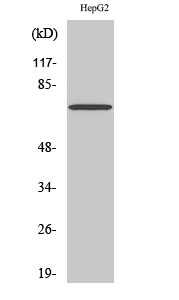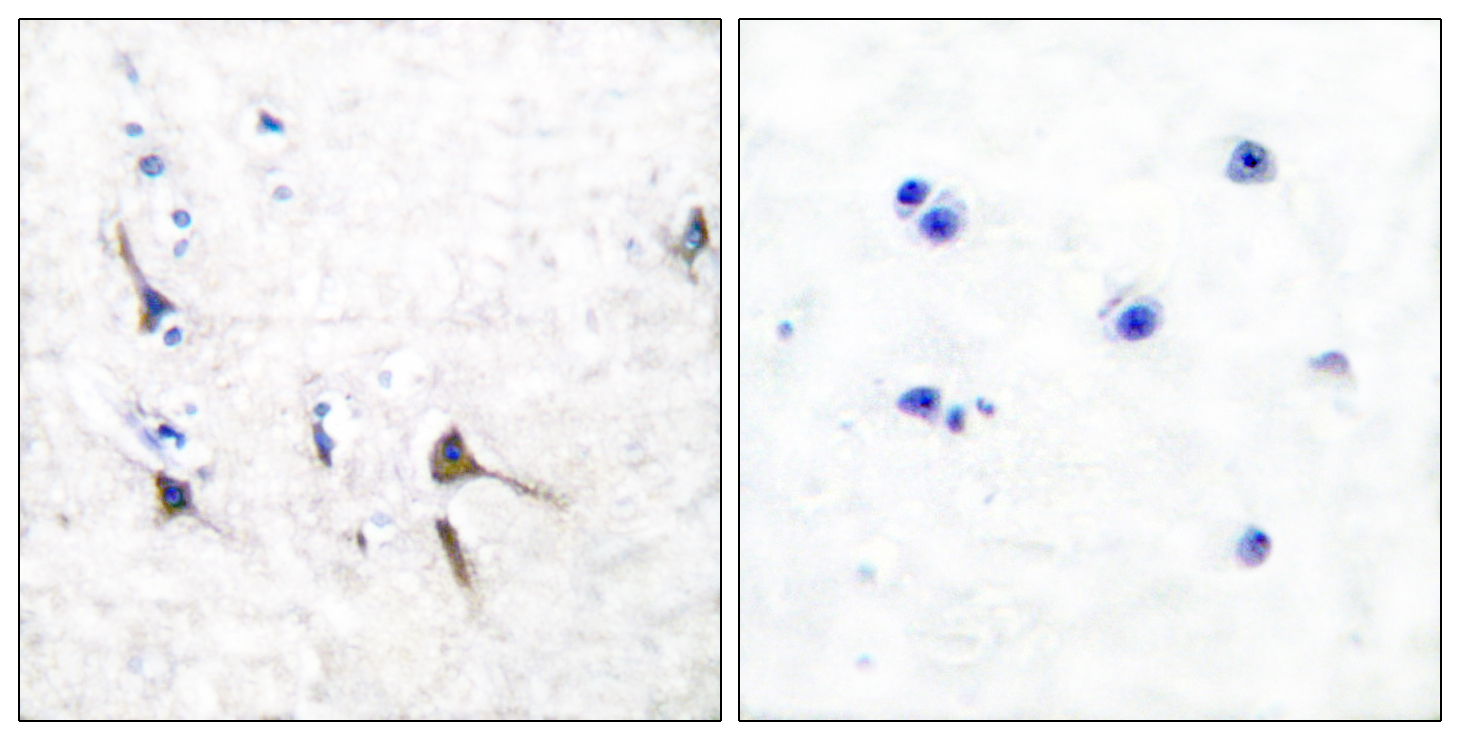KV3.2 Polyclonal Antibody
- Catalog No.:YT2511
- Applications:WB;IHC;IF;ELISA
- Reactivity:Human;Mouse;Rat
- Target:
- KV3.2
- Gene Name:
- KCNC2
- Protein Name:
- Potassium voltage-gated channel subfamily C member 2
- Human Gene Id:
- 3747
- Human Swiss Prot No:
- Q96PR1
- Mouse Swiss Prot No:
- Q14B80
- Rat Gene Id:
- 246153
- Rat Swiss Prot No:
- P22462
- Immunogen:
- The antiserum was produced against synthesized peptide derived from human Potassium Channel Kv3.2b. AA range:589-638
- Specificity:
- KV3.2 Polyclonal Antibody detects endogenous levels of KV3.2 protein.
- Formulation:
- Liquid in PBS containing 50% glycerol, 0.5% BSA and 0.02% sodium azide.
- Source:
- Polyclonal, Rabbit,IgG
- Dilution:
- WB 1:500 - 1:2000. IHC 1:100 - 1:300. ELISA: 1:10000.. IF 1:50-200
- Purification:
- The antibody was affinity-purified from rabbit antiserum by affinity-chromatography using epitope-specific immunogen.
- Concentration:
- 1 mg/ml
- Storage Stability:
- -15°C to -25°C/1 year(Do not lower than -25°C)
- Other Name:
- KCNC2;Potassium voltage-gated channel subfamily C member 2;Voltage-gated potassium channel Kv3.2
- Observed Band(KD):
- 70kD
- Background:
- The Shaker gene family of Drosophila encodes components of voltage-gated potassium channels and is comprised of four subfamilies. Based on sequence similarity, this gene is similar to one of these subfamilies, namely the Shaw subfamily. The protein encoded by this gene belongs to the delayed rectifier class of channel proteins and is an integral membrane protein that mediates the voltage-dependent potassium ion permeability of excitable membranes. Several transcript variants encoding different isoforms have been found for this gene. [provided by RefSeq, May 2012],
- Function:
- domain:The segment S4 is probably the voltage-sensor and is characterized by a series of positively charged amino acids at every third position.,domain:The tail may be important in modulation of channel activity and/or targeting of the channel to specific subcellular compartments.,function:Mediates the voltage-dependent potassium ion permeability of excitable membranes. Assuming opened or closed conformations in response to the voltage difference across the membrane, the protein forms a potassium-selective channel through which potassium ions may pass in accordance with their electrochemical gradient. Channel properties are modulated by subunit assembly.,similarity:Belongs to the potassium channel family. C (Shaw) subfamily.,subunit:The potassium channel is probably composed of a homo- or heterotetrameric complex of pore-forming subunits that can associate with modulating accessory subun
- Subcellular Location:
- Cell membrane ; Multi-pass membrane protein . Membrane ; Multi-pass membrane protein . Perikaryon . Cell projection, axon . Cell projection, dendrite . Cell junction, synapse, postsynaptic cell membrane . Cell junction, synapse, presynaptic cell membrane . Cell junction, synapse, synaptosome . Cell junction, synapse . Apical cell membrane . Basolateral cell membrane . Colocalizes with parvalbumin in globus pallidus neurons. Localizes in thalamocortical axons and synapses. Localizes on the surface of cell somata, proximal dendrites and axonal membranes. Also detected throughout the neuropil. Localized in starburst cell somata and proximal dendrite processes. Colocalized with GABA in presynaptic terminals. Clustered in patches in somatic and proximal dendritic membrane as well as in axons an
- Expression:
- Amygdala,Brain,
- June 19-2018
- WESTERN IMMUNOBLOTTING PROTOCOL
- June 19-2018
- IMMUNOHISTOCHEMISTRY-PARAFFIN PROTOCOL
- June 19-2018
- IMMUNOFLUORESCENCE PROTOCOL
- September 08-2020
- FLOW-CYTOMEYRT-PROTOCOL
- May 20-2022
- Cell-Based ELISA│解您多样本WB检测之困扰
- July 13-2018
- CELL-BASED-ELISA-PROTOCOL-FOR-ACETYL-PROTEIN
- July 13-2018
- CELL-BASED-ELISA-PROTOCOL-FOR-PHOSPHO-PROTEIN
- July 13-2018
- Antibody-FAQs
- Products Images

- Western Blot analysis of various cells using KV3.2 Polyclonal Antibody

- Immunohistochemistry analysis of paraffin-embedded human brain tissue, using Potassium Channel Kv3.2b Antibody. The picture on the right is blocked with the synthesized peptide.

- Western blot analysis of lysates from HepG2 cells, using Potassium Channel Kv3.2b Antibody. The lane on the right is blocked with the synthesized peptide.



